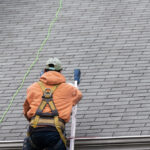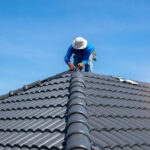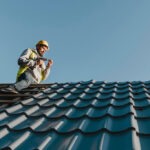The roof over your head is more than just a structure; it’s a shield against nature’s force. Every homeowner should be informed about how to protect your roof from tree damage to ensure the longevity and safety of their home. This article delves into practical solutions and preventative measures to avoid roof issues caused by trees.
It’s important to recognize the value of roof maintenance and tree management. By understanding potential hazards and how to address them, you can protect your investment and guarantee peace of mind.

The Importance of Regular Roof Inspections
Regular inspections are a cornerstone of effective roof maintenance. Detecting weaknesses early can prevent more significant damage in the future.
Why Inspections Matter
Inspections help identify cracked shingles, leaks, and worn out materials. It is crucial to inspect after major storms or seasonal changes.
Learn more about maintaining roof health here.
Knowing When to Call a Professional
While some issues can be spotted easily, others require a professional eye. A licensed roof inspector can provide insights and identify issues you might miss.
Understanding the Risks of Overhanging Branches
Overhanging branches pose a significant risk by constantly brushing against your roof, which can wear down materials over time.
Potential Damage from Branches
Branches can scrape shingles or even fall through your roof during storms, leading to costly repairs.
Maintaining Safe Distances
To prevent issues, ensure that branches are at least six feet away from your roof. Regularly trim any that come too close.
Tree Selection and Planting Best Practices
Choosing the right trees and planting them strategically can minimize potential damage to your roof.
Ideal Tree Characteristics
Select trees with deep roots and avoid fast-growing varieties that are more prone to breakage.
Proper Planting Distances
Trees should be planted at least 20 feet away from the house to allow for growth and prevent roots from interfering with the foundation.
Signs Your Tree Might Be a Nuisance
Recognizing when a tree becomes a threat to your roof is vital.
Common Indicators
Look for dead limbs, leaning trees, or visible root exposure as these may suggest an increased risk.
Using Protective Barriers Effectively
Barriers can be an effective tool to shield your roof from direct contact with branches.
What Are Protective Barriers?
These are physical structures that deflect branches from touching or leaning against your roof.
Installation Techniques
Securely installing barriers involves careful positioning to ensure maximum effectiveness.
Choosing the Right Time for Roof Pruning
Pruning is essential and must be done carefully to maintain tree health and roof safety.
Optimal Pruning Seasons
The best time is generally late winter or early spring before new growth begins.
Read more about tree care and its importance in home maintenance here.
Techniques for Safe Pruning
Always use the correct tools and techniques to avoid injury and damage to the trees.
The Value of Storm-Ready Roofs
Preparing your roof well ahead of storms can significantly reduce tree-related damage.
Preparing Before Storms
Clear all debris and check for potential weaknesses prior to the storm season.
Using Roofing Materials Built to Endure
Selecting durable roofing materials can provide added protection and longevity.
Suggested Material Types
Opt for metal or composite roofing materials known for their durability.
Material Maintenance
Regular cleaning and inspections can increase material lifespan. For more roof maintenance tips, visit this guide.
Insurance Policies That Cover Tree Damage
Insurance can be a financial safeguard against unforeseen damages.
What to Look for in Policies
Select policies that specifically include coverage for tree-related incidents.
Implementing a Regular Maintenance Schedule
A consistent maintenance schedule helps avoid surprise problems and extends your roof’s lifespan.
Creating a Schedule
Set reminders for regular tasks like trimming, gutter cleaning, and inspections.
For more on gutter maintenance, visit this article.
FAQ Section
How often should I inspect my roof?
Generally, roofs should be inspected twice a year and after severe weather events.
What are the first steps if a tree damages my roof?
Contact your insurance provider immediately and hire a professional to assess the damage.
What tools are needed for proper tree trimming?
Pruning shears, a hand saw, and a ladder are essential. For ladder tips, check here.

Conclusion
By following these guidelines on how to protect your roof from tree damage, homeowners can enjoy peace of mind, knowing their home is safe from the risks trees may pose. Regular maintenance, proper techniques, and due diligence are key to a strong and lasting roof.
This article contains affiliate links. We may earn a commission at no extra cost to you.







